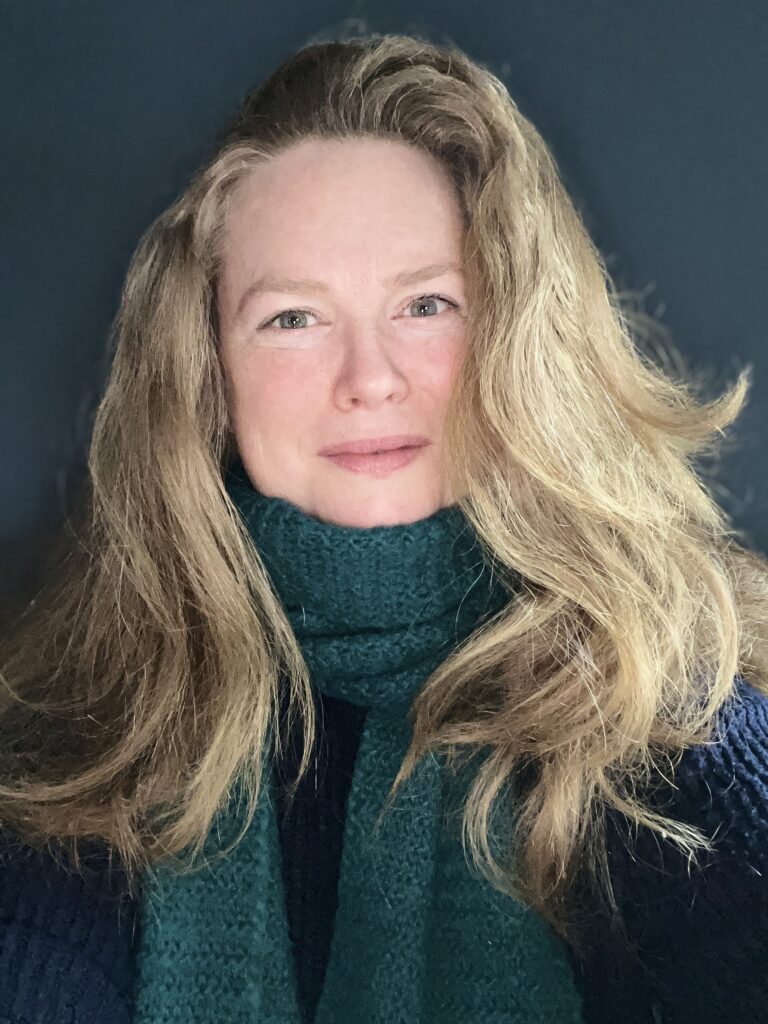I was looking for the midden, but I found a well.
A place of pilgrimage, marked by two knee-high wooden crosses leaning away from the prevailing wind. Saint Féichín’s well, where the holy water no longer rises from its source, and now rainwater seeps into its small opening, almost hidden in the grass. All around it, the air holds something in suspension: layers of history and spirituality that I have yet to unpeel.
Sea-rounded lumps of granite are tucked together to form a shrine where expressions of love and loss and hope are set carefully at its heart. A bright-pink Race for Life ribbon, yet to fade, 2013 on the rusting medal; a cockle shell filled with copper coins corroding slowly; a small plastic bottle of holy water. Set back is a teddy bear, stuffing exposed from the midriff down, crispy with salt spray and bleached by the sun. Its one black eye, thoughtful, watches the comings and goings. And there, placed delicately, respectfully, to one side was a perfectly clean human bone, slim like a shin bone, short like a child’s.
This is a harsh landscape, formed of granite older than the Atlantic, once part of the mainland and covered in hardwood forests of oak and elm. Omey, off the western edge of Connemara, became a subtidal island when the glaciers melted. Three hours before low tide you can walk from Claddaghduff, a kilometre across the rippled sand. A single road leads to an occasional community, holiday houses that sit blankly for most of the year. The rest are ruins with jagged glass and boarded windows. Omey is low and bleak; enormous boulders testify to raging storms, flung like pebbles high onto its short-grass flats. This is where Saint Féichín founded his monastery in the 7th century, to convert pagans to Christianity.
I keep walking, with the September sun on my left. The blue-green sea glints, deceptively calm, like a Siren drawing me close. But I was forewarned: the treacherous currents will sweep you away to join the centuries of drowned souls circling the islands. I walk across the machair and through the sand dunes, which form and reform with the fickle winds. This is the sand that once covered people’s houses so deeply that they had to burrow through, like rabbits, to climb inside.
I am still looking for the midden, but I find a sunken church.
In a hollow, protected from storms and raiders, is an ancient and substantial church built on the monastic remains. The unforgiving winds buried it in sand, and it held its secrets for centuries. In the early 1980s, the local curate, Father Martin Greany, spotted two sections poking up out of the ground. “Curiosity got the better of me,” he said. So he gathered a group of local lads, and a digger, and they moved thousands of tonnes of sand. Now its pink granite walls glitter in the sunshine, stone lintels still holding the framework up to the heavens.
Everywhere there are ghosts of those who called this scrap of an island home. The monks, cultured and skilled. The dead in the graveyards, the sea pulling their bones from their resting places and dumping them on beaches to be found and placed by the shrine. Headstones have sunk awkwardly into the ground, names and dates eroded by the abrasive sand-laced winds.
There is pain in the thin, harsh soil. I walk by the lazy beds, their ridges and furrows holding close the stories of hard labour: digging and heaping, digging and heaping. Of famine and poverty. But there is inspiration here too. I climb round the hilltop hideaway of the late poet Richard Murphy, a tiny, hexagonal building with views in all directions. Here, when the ocean was too wild to let him sail to nearby High Island, the seascape could still lift and carry his thoughts.
The low tide unveils the secret world of the shoreline. Mustard-yellow lichen blink in the bright sunshine, the rocks wear seaweed disguises. Pools of water cradle tiny fish, and the sand, soft as velvet, dances gently with the wash of the tide. Everything is resting before the Atlantic sweeps through and rearranges it once more.
I miss the midden when I first walk past it. I circle back, confused. Then it is there, a metre beneath the thin turf’s surface, where seas have scoured away the cliff. Seams of dark soil flecked with shells: cockles, whelks and periwinkles. Layers of animal bone and ash. On the sand by my boot is a spiralled shell that has fallen from the midden. I touch it with my fingertip, a tiny connection to someone else’s life. The centuries ripple through me as this ancient rubbish heap releases its stories into the wind.
About Emma Willsteed
Emma was born and brought up in Hong Kong, developing a fascination with languages and cultures. And food. She’s happiest on a bike cycling through unfamiliar landscapes, covered in sunscreen and collecting stories from the people she meets.
